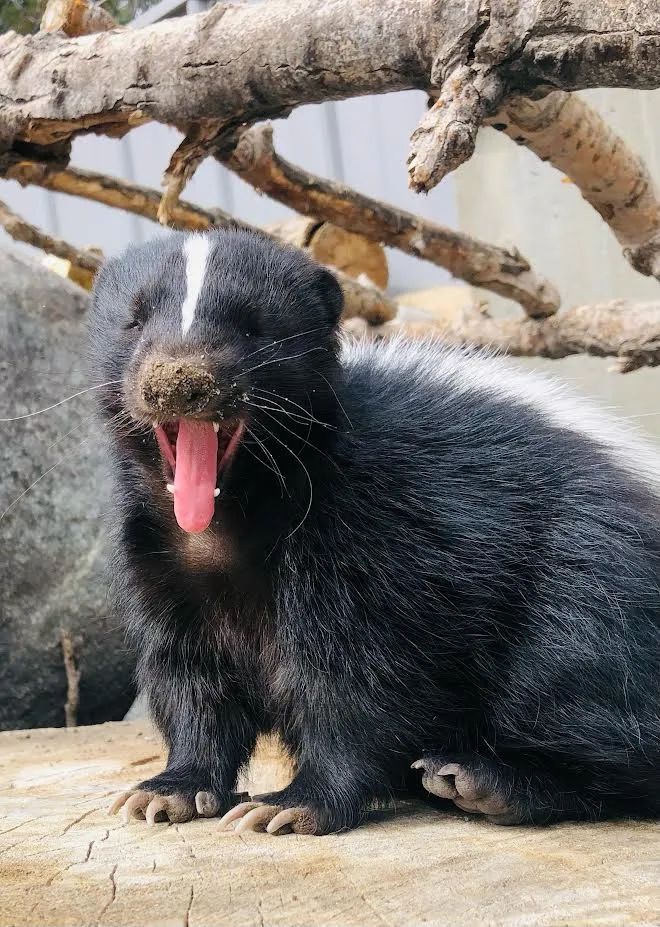
Striped Skunk
Mephitis mephitis
Striped skunks are named after their very iconic coloration and patterns that make identifying them easy. Their bodies are primarily black with their white “V” going from the back of their head to the start of their tail (the point of the “V” is their head and then they have two stripes going down their body). They also have a little white stripe of fur that runs in between their eyes on their forehead and have long fluffy tails that have both black and white fur. Skunks will be born with this pattern on their skin, so their pattern is there before their fur fully comes in and each pattern is different to each skunk, just like each fingerprint is different for each person. Striped skunks can be found in southern Canada, throughout North America, and in northern Mexico. There are a total of twelve different skunk species in the whole world and a third of them are found in North America: the striped skunk, the hooded skunk, the spotted skunk, and the hog-nosed skunk. Skunks are also known for their primary defense mechanism which is the foul-smelling musk that they produce. They are not quick to spray you and will try to give a warning by hissing and or stomping their feet.
Our Current Residents
Here at the Zoo, the skunks do not have the glands that produce this odor so they cannot spray. However, the skunks do live with the porcupines that have their own unique odor that people will often assume is the skunks!
Cody and Shane are a set of brothers who came to live at the Zoo when their mother passed away.
Cody, Male – Born in April 2021 (estimated and celebrated)
Cody was named after Cody, Wyoming where the pair were found. If you are looking for Cody, he has a thicker face stripe and a black spot on the white stripe on the back of his neck.
Shane, Male- Born in April 2021 (estimated and celebrated)
Shane is named after a previous employee who has a deep love for skunks. If you are looking for Shane, he has a thinner face stripe than his brother.
Taxonomy
- Kingdom: Animalia
- Phylum: Chordata
- Class: Mammalia
- Order: Carnivora
- Family: Mephitidae
- Genus: Mephitis
- Species: Mephitis mephitis
Animal Facts
Omnivores: mainly eat insects like crickets/ grasshoppers, beetles, eggs, fish, etc.
Population Status: currently listed as Least Concern
Montana Population Status (according to Montana Field Guide): currently listed as Secure
Habitat: grasslands, forests, agricultural fields, and even urban areas
Activity: nocturnal (or crepuscular)- mostly active during the night (or dusk and dawn)
